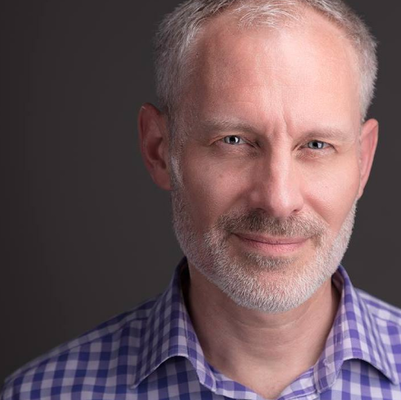By: Lindsay Cummings and Priya MigneaultMoments after sitting down with Calgary-based photographer Scott Campbell, my fellow interviewer and I ruffling through our prepared questions, we’re immediately given a warning. “There’s something I should tell you before we start. I’m half blind, half deaf, and half stupid,” says Campbell. After pausing for a moment, we realize he’s being dead serious. After preparing questions for weeks, we thought would get at what we needed - interviewing a photographer involved asking about his career pathway, camera techniques, and technical details to learn from. But after nothing but his first few sentences, we realized it wouldn’t be long before those questions were thrown out the window. “I have a hidden handicap,” explains Campbell. “I had cancer as a kid, and I grew up half-deaf. Because I only have one side, it can take me up to 5 seconds to figure out what you’ve said. So that’s why I say I’m half stupid. But it’s hidden. So anyway, just to let you know if you have to repeat something.” It had been one minute sitting with this man, and he had already shared a huge part of his life - one that didn’t seem like a big deal to him. Bring my very first interview, I was naturally very interested to listen to someone with such a vulnerable story. We began to ask more about his experience and his life journey. Scott began taking pictures at 12 years old, from what initially began as a fun invite from his homeroom teacher to come and check out how pictures were developed. “I just thought it was really cool. I said I wanted to try and do this myself, and he said, ‘Well, go and try and get your mom’s camera, and get some black and white film, and take some pictures.’” Campbell’s instant connection to photography is explained very simply: “I saw things.” This phrase is frequently mentioned by Campbell throughout our conversation. We follow this up by pondering him for his inspiration, purpose, or reason for expressing his talent, as we expect that most artists have. “Unlike some artists, I don't have a yearning to get a message out... I realized I saw these things in my head that other people couldn’t see. For me, it’s just a thing that I have to do, right? When I have a compulsion it actually hurts till it comes up. I see pictures in my head, and they have to come out.” Being handicapped sure hasn’t stopped him pursue his passion for photography, but has been a huge obstacle in Campbell’s main career - business and engineering. Scott is the current CEO of computer software Solv3D. “Not being able to hear and not being able to figure things out is hugely impactful in a negative way in the business life. That environment with lots of people talking can be really hard. People forget that I can’t hear and they think that I’m ignoring them or being stand-off-ish,” explains Campbell. “But on the art side, ehh, not so much.” Despite juggling two successful careers, Scott still manages to put an extraordinary amount of effort into his photography projects, but only began to take interest in dance photography later in his life. “I've been doing landscape photography forever. And then I happened to be at a dance performance, and as I say, I just see these wonderful pictures in my head, but they were all outdoors - which I guess historically speaking, is where we learned to dance.” He also emphasizes the importance of seeing his work and seeing the talent of dancer, not necessarily the talent of the photographer. “I never shoot a dancer without sitting down for coffee or hot chocolate and talking to them about why they dance and what it is that they're looking for,” Campbell states. Not only does Scott value the importance of the subject in his dance work, but also when taking headshots. However, when questioned about his headshot methods, Campbell declined sharing too much information with a sleek smile. “I can't tell you too much about it. I have a method for my headshots, which if you sit for me for a headshot, you'll understand, but it involves psychology.” He later explained the concept of a Duchenne smile, which is named after a 1800s Frenchman who electrocuted people into smiling. The term is mainly used to describe a genuine smile using the eyes. “I tried to recreate that, not by electrocuting, but by getting inside people's heads...with a businessman or an artist, they are terribly awkward.” Campbell laughs that his big secret to calming subjects down is, unexpectedly, chocolate. “I’m a chocolate nut,” joked Campbell. “It just calms people right down.” Throughout our conversation, I most definitely took away Scott’s main message - even a technical art form such as photography requires the use of human connection. “Ansel Adams, a famous photographer has a famous quote - ‘There's two people in every picture - the photographer and the viewer.’ And so my job as a photographer is to use my knowledge of psychology to capture that person for who they are.” To view Scott’s work, visit scottcampbell.photography.
0 Comments
|
AuthorZed News reporters bring you interviews with the folks in CSpace, a Calgary gathering spot. Archives
March 2023
Categories |
Visit our AWCS Website: www.alexandrawriters.org for more information
Proudly powered by Weebly


 RSS Feed
RSS Feed